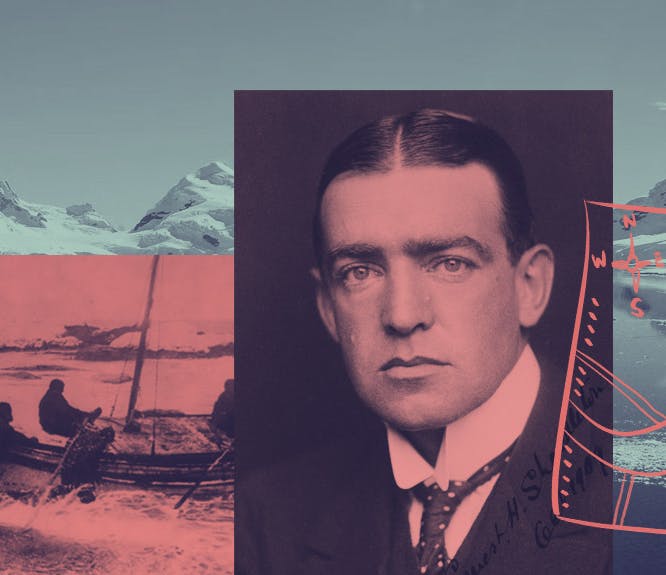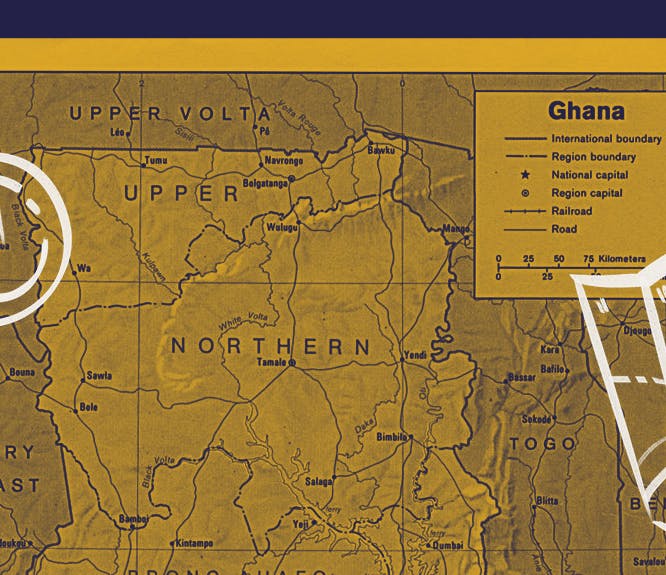The painstaking process of preserving old family records
4-5 minute read
By The Findmypast Team | October 15, 2019
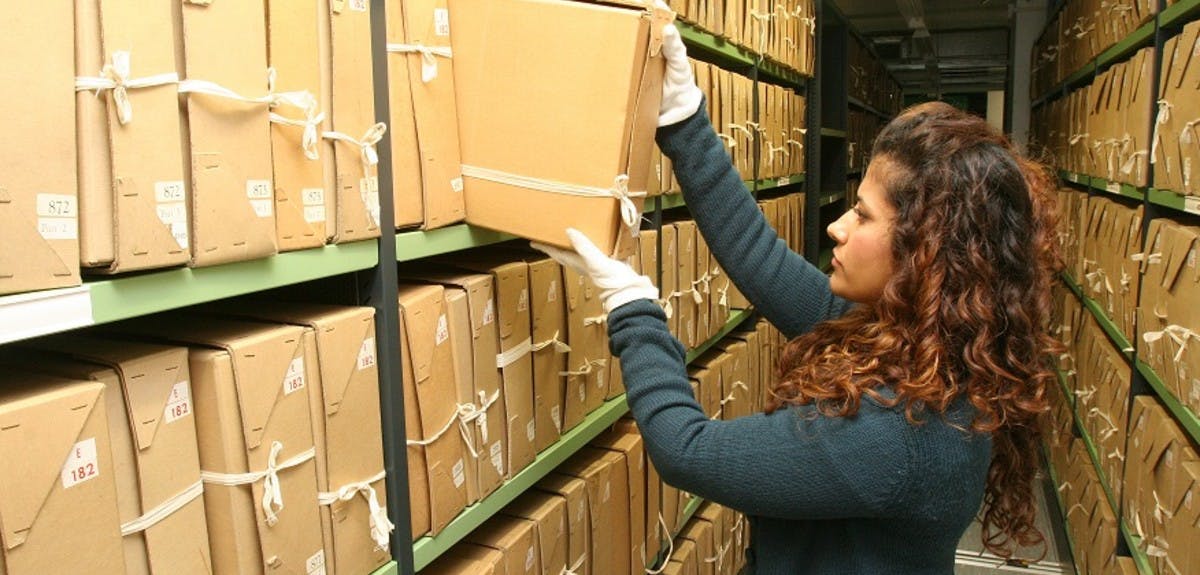
Ever wondered what’s involved in digitizing old parish records or what happens to census data before it goes online?
Today, we’ve all gotten used to accessing information on the internet, including centuries-old family records. But what does it take to bring a fragile, 300-year-old document or historical newspaper page to your fingertips via your computer or smartphone?
The preservation of paper-based records is a long and costly process. At Findmypast, we’re proud to play a part in that process. For us, it’s all about preserving history, your family’s history, page by page.
We’re a global player in licensing, conserving, digitizing and publishing historical records. The results are extensive online resources that you can use to build a bigger picture of who and where you’ve come from. Our Head of Data Development, Aoife O Connor, puts it best:
""Being permitted to transform the holdings of archives into digital images and databases for people to access from anywhere in the world is an absolute privilege. Digitizing historical records and newspapers is a craft and our conservation and digitization teams take great pride in their work and love seeing the end result - people discovering the rich stories in their family tree.""
This is the story of how we transform billions of delicate old documents, sitting on an archive bookshelves, into easy-to-search online records that are accessible in seconds.
Licensing old records
Before your ancestors’ records make their way onto Findmypast, they first need to be identified and licensed. Our licensing team seek out name-rich record collections, perfect for family tree building. What’s more, a special effort is made to secure records that bring your family’s amazing story to life like never before, records that give you details, context and color that you won’t get anywhere else.
Once we’ve selected the records we’d like to publish on Findmypast, we need to get permission to do so. The licensing team negotiate deals every day, some with the world’s most prestigious archives, libraries and institutions and others with smaller, local archives and individuals. Every negotiation is different. Some licensors come to us to offer their record holdings, while other deals can take years to finalize. The result, however, tends to be the same. The licensor is rewarded in some way (monetary or otherwise) and we can publish their records online for you to explore.
Conservation of old records
Records preservation or conservation is the careful task of saving flimsy old documents from destruction. Without this key stage of the digitization process, the family records you view online would be difficult to read or worse, not fit to digitize in the first place.
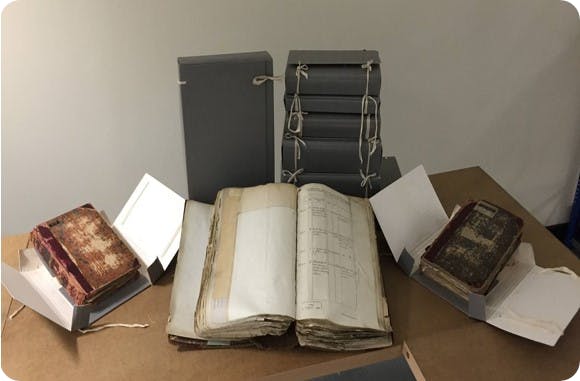
How original records typically appear before conservation.
If records bound for the Findmypast site require special care before they can published, we make sure they're given it so that they reach you in the best condition possible.
How to preserve old documents
Records conservation is a meticulous job that involves carefully inspecting each and every page and repairing any damage. Our record conservationists check for mould, water and holes made by insects. A variety of tools including brushes, heated spatulas and specialised sponges are used to remove dirt and debris and to press down any creases or folds to ensure the material passes safely through the scanner, and folds do not cover the information on the document. Once the items have been photographed they are reinspected and placed in archival boxes for long-term storage.
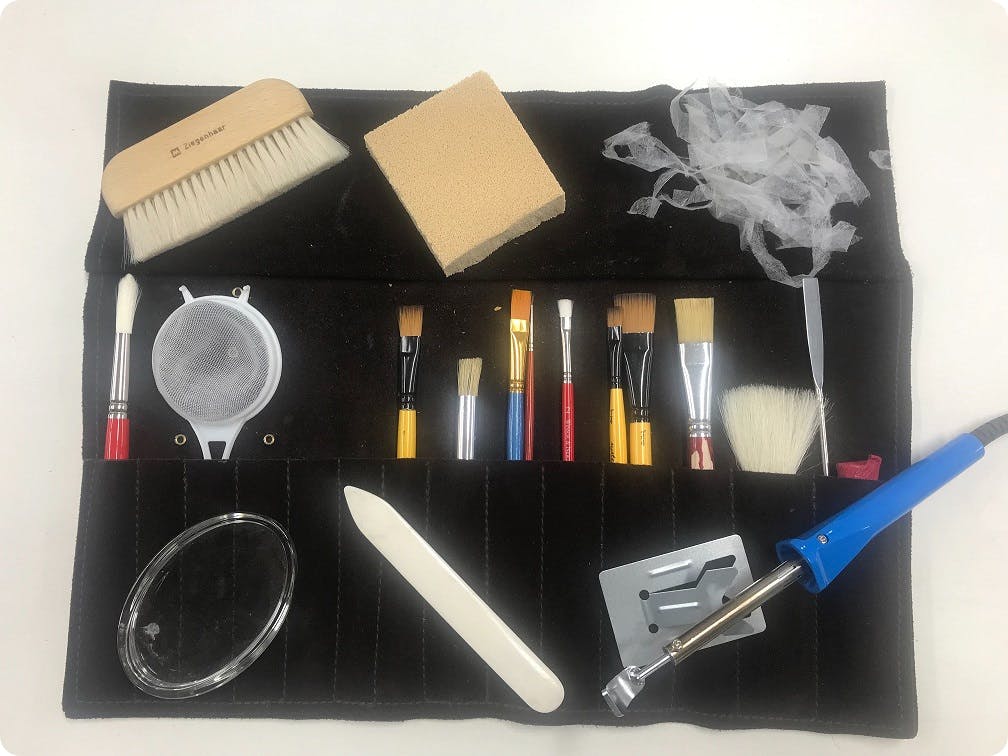
The tools of the trade we use to preserve historical records.
It’s easy to forget that these historical documents weren’t actually created with genealogists or historians in mind and therefore not every document created is considered worth conserving for future generations. In fact, the archives themselves don’t even keep everything, they make choices on what is worth preserving and what isn’t.
Digitizing old records
The next step in the process is bringing the records into the 21st century through digitization. This can take a long time, depending on the amount of records that need to be digitized. For instance, scanning began on the 7,000 volumes of the 1939 Register in September 2014, with the final publication coming over a year later in November 2015.
Broadly, the records digitization process can be broken into four distinct steps:
1. Photography
Every single page of the original record collection is photographed by expensive, high-definition scanners to create digital versions.
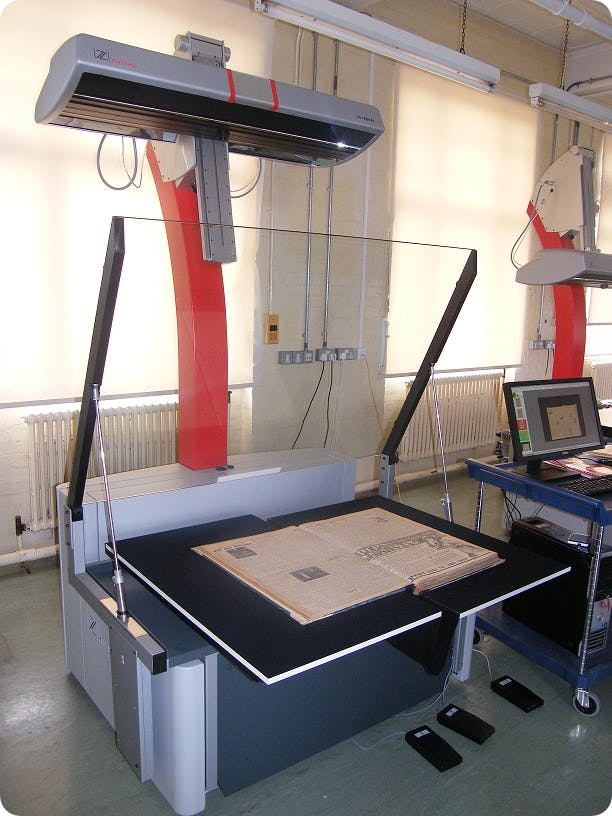
A large format scanner used at our digitization site in West Yorkshire, England.
This is another painstaking process, as explained by Samantha Thompson of Peel Archives:
"“Many archival record groups are not easy to scan quickly. The fastest way of scanning a stack of pages is with an automatic feeder, but feeders only work with same-sized pages in good condition. Even then, the benefits of speed have to be weighed against the risk of a one-of-a-kind document being mangled by a paper jam."
"For unique or fragile records (and most archival records fall under one of these headings), manual scanning is one of the only responsible options. For each scanned item, there can be dozens of associated tasks, from removing staples and positioning the item, to processing images and entering metadata. That adds up to a lot of work: scanning a single archival box of records can take days.”"
2. Transcription
The most important details on each page are then typed up to make them suitable for online publishing.
Millions of names, addresses, birth and death dates are transcribed at this point and, again, choices need to be made about what is most important to transcribe and what will remain viewable only on the record image.
3. Storage
All of this data needs to live somewhere. Findmypast buys and maintains huge servers that host the data and images for the billions of records on our site.
4. Organization
To make it as quick and simple as possible for you to find family members, we need to arrange our record transcripts and images into easy-to-search databases, ready to be added to the website.
Publishing old records online
After all of the hard work and preparation that goes into licensing, conserving and digitizing our historical records, you can understand why we get a little excited when it’s time to publish them.
We release new records every week on Findmypast Friday - the only family history site with such a promise. This is material that, in many cases, until we publish it, is only accessible in person at an archive (if you're lucky enough to make it to that archive). Now, you can view it with just a mouse click or screen tap, wherever you are on the planet.



